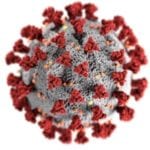Hytera has become the latest biometrics specialist to advocate for contactless body temperature detection as an effective way to slow the spread of the novel coronavirus. To that end, the Chinese company has developed a solution that can determine the body temperature of multiple individuals at a distance of three meters.

According to Hytera, the solution will be particularly useful at hospitals and borders, since it will allow health and/or security personnel to remotely take the temperature of anyone entering the building or passing through various checkpoints. Fever is one of the symptoms of COVID-19, so the system will make it easier to spot a potential infection without exposing workers to the risks associated with close contact.
If the Hytera system does spot someone with an elevated temperature, it will automatically send an alert to a Hytera PNC550 PoC radio device. The relevant staff can then isolate that individual to double-check the result and take the appropriate response.
Hytera also offers facial recognition technology that can be paired with its temperature detection solution. The full system allows hospitals to distinguish employees from visitors and patients, and generates records for every individual who enters the building. Those records include temperature and time of entry.
Finally, Hytera indicated that its facial recognition and body detection system can be deployed in conjunction with its VM780 body cams and video conferencing technology to deliver better remote care. The cameras can stream live footage from an ambulance to enable a diagnosis en route to the hospital.
Hytera is not the only company pushing temperature detection technology in response to COVID-19. DERMALOG has been promoting a similar solution, and has already installed its temperature detection technology at Thailand’s Don Mueang International Airport.
China is also relying on thermal imaging to slow the spread of the virus. Biometric tablets have been placed on city buses in Guangzhou, and thermal imaging is reportedly being used in facial recognition cameras across the country.
–
April 13, 2020 – by Eric Weiss








Follow Us